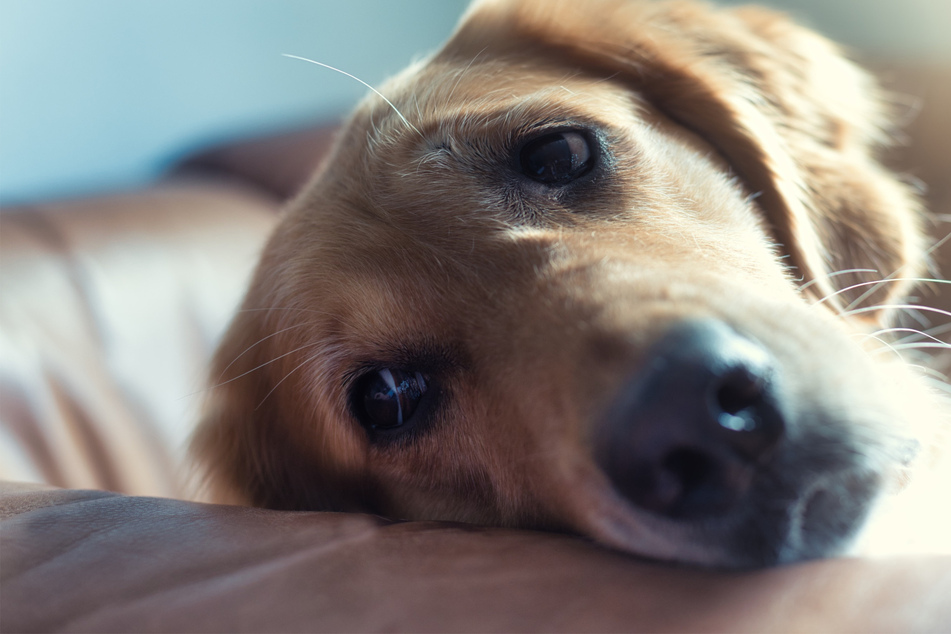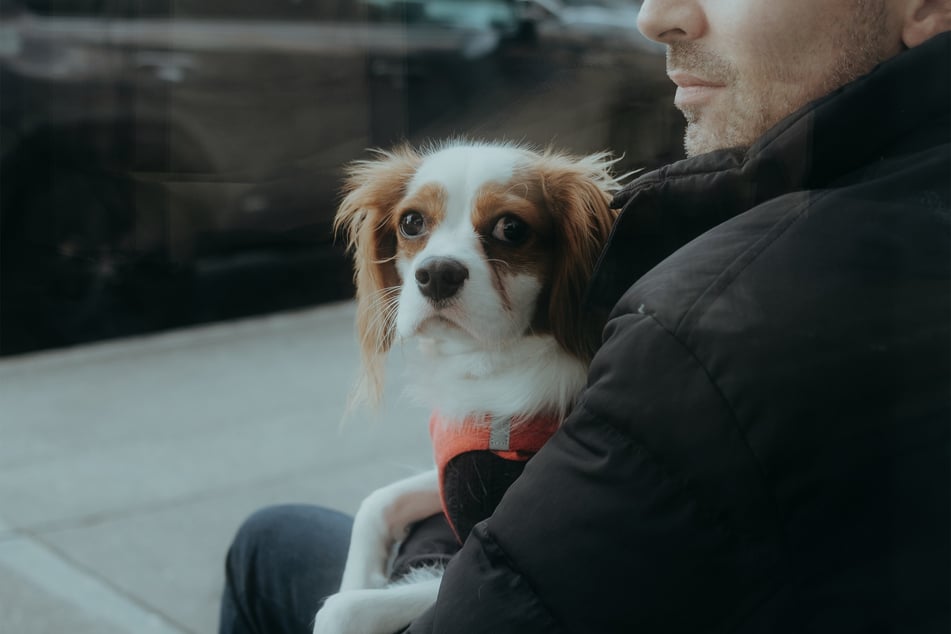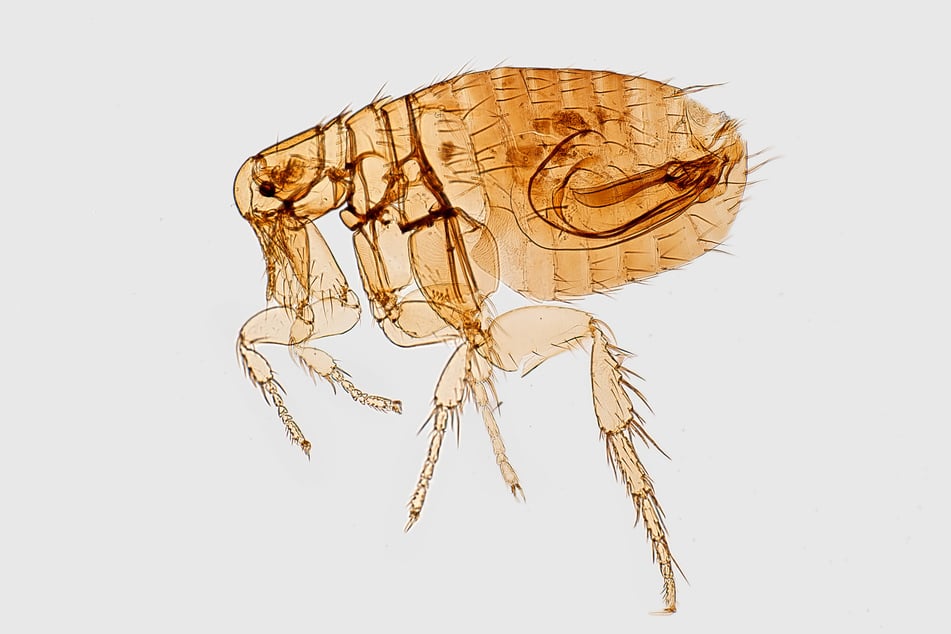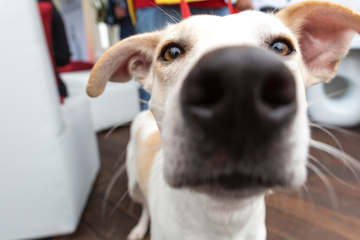Dog fleas: Detection, symptoms and treatments of flea bites on dogs
There are few things more unpleasant than a dog flea infestation, and few things more difficult to deal with. We're here to help you detect flea bites on dogs and get rid of them as quickly as possible.

If your dog has been behaving strangely, and is looking quite uncomfortable and unhappy, it might be time to check for fleas. These tiny parasites are hard to detect, but extremely unpleasant if an infestation occurs. Luckily, while it may take some time to fully get rid of them, treatment is not too difficult.
In this dog guide, TAG24 will take a look at flea bites on dogs. How can you detect flea bites, what are the symptoms of fleas on dogs, and what can you do to get rid of them? With these dog flea treatment tips, you'll be well prepared for an infestation.
Please note: We here at TAG24 absolutely adore the canine companions and feline friends that we write about, but that does not make us animal health professionals. If you are concerned that your dog is suffering from a health issue, or has a flea infestation, seek the advice of your veterinarian immediately. This page is just meant to convey general information.
What do flea bites look like on dogs?
Flea bites can be very hard to spot on dogs, as they appear on skin that is often covered in dense, thick, and darkly colored hair. They are extremely small, especially when compared to other kinds of insect bites, and don't generally cause the large-scale swelling you'd expect from something like a tick bite.
In general, flea bites will appear on your dog's skin as small and raised red dots that could easily be mistaken for some kind of rash or even a very minor and tiny mosquito bite.
Here are some of the most common places where a flea will bite your dog:
- Belly and around the nipples (if your dog is female)
- Paws and legs
- Inside legs and armpits
- Crevices in the skin, folds, and other nooks and crannies
- Inside the ears and near their base
- The "flea triangle" – middle of the back to the base of the tail and down the hind legs
Make sure to keep an eye out, particularly searching for areas of your dog's skin that have gone red or are obviously inflamed.
Important: You should check for flea bites regularly. Do so by having someone hold your dog while you go through the most likely spots on which fleas will attack, parting your doggo's hair and checking as you go.
Dog scabs from fleas
If left untreated or undetected, flea bites will often scab over and become crusty sores scattered across your dog's body. While they don't initially cause any serious long-term harm, the risk is that those scabs will be ripped off when a dog scratches itself (flea bites are often very itchy) and can then start to bleed.
When this happens, additional risks start to add up. The flea bite itself is so small that it is less likely to get infected, but worrisome, bigger wounds caused by the ripping off of scabs can easily get dirty and then infected. This will, in turn, cause your dog more pain, harm, and discomfort.
Flea bites on dog's belly
The belly is the most common place for a flea to bite your dog, though they can bite anywhere. This is because your dog's stomach is the most vulnerable place on its body, often extremely warm, and usually the flea's first point of contact as it is the closest to the ground and will often be brushed by grass, leaves, and various other things found outside.

Symptoms of fleas in dogs
It's extremely important to check on your dog regularly for fleas, but let's be real – it's incredibly difficult to spot them. A lot of the time the fleas and the marks they leave when they bite are hidden in your dog's dense fur, unable to be spotted unless you spend hours searching for them.
While the difficulty of this task largely depends on your dog's coat type – double-coated dogs being the hardest – it is quite likely that your detection of fleas will come down to whether or not you recognize the symptoms of their bites on dogs. To do this, you first need to know what the signs are.
Here are the most common symptoms of fleas in dogs:
- Itching and scratching
- Biting and chewing
- Severe or minor hair loss
- Infected or reddening skin
- Clear signs of bites
- Scabbing on your dog's skin
- Discomfort and jumpiness (your dog will often flinch when it's bitten)
You should also be aware that it is very likely that you will be getting bitten by fleas if your dog has been infested with them. The symptoms are more or less the same for humans, and it's a safe bet that if you have been bit, then your poor perfect pooch is the source.
Allergic flea bites on dogs
While most dogs will be uncomfortable when bitten, hounds that are allergic will develop something called flea allergy dermatitis. This is when the bites cause severe rashes and hair loss, as well as increasingly painful and extreme itching. These symptoms will usually be noticed in what we previously described as the "flea circle," the most common area for a dog to be bitten.
If you are concerned that your dog is allergic to flea bites and might be suffering from this condition, your vet can perform a variety of different tests to confirm a positive diagnosis. If the dog has flea allergy dermatitis, your vet will get it on treatment immediately. Don't worry, though, while horrifically uncomfortable, this is not a dangerous condition.
Never self-diagnose: While it might seem clear to you that your dog has this condition, it's never certain until it confirmed by a medical professional. See your vet if you're suspicious, but don't go making unsubstantiated claims.
How to prevent dog flea bites

The CDC recommends that all dogs should be treated with flea medicine each and every month. They also recommend a variety of precautions to keep fleas away from you, your dog, and your home. While many of these are most useful when used to protect humans from fleas, some can be applied to doggos as well.
In general, one of the best ways to keep your dog from getting fleas is to not let it near stray or wild animals, and to keep it away from anything sick or dead. Fleas are parasites and will latch on to such animals, as they are the perfect breeding ground.
Other preventative measures include, but are not limited to:
- Getting your dog on a flea prevention scheme, involving the application of anti-flea medicine each and every month.
- Keeping your dog away from areas and places where fleas are particularly common.
- Regularly bathing your dog, using anti-flea shampoo, and keeping it as clean and well groomed as possible.
- Using flea collars, which can be prescribed by the vet and are often effective.
- Keeping your house clean and free of unnecessary clutter.
- Making sure that your yard is well-trimmed and maintained.
In regard to flea medicine: Specialized preventative flea medicine is usually applied every month or every five weeks. It is easy to use and relatively inexpensive, and compulsory in many US states (and in many other countries as well). You should speak to your vet immediately after adoption and get your doggo on the meds as quickly as possible!
Dog flea treatment: How to treat fleas on dogs
Dog flea treatment can be a long and difficult process, as you're going to need to basically clean every item you own. We will start first with how to treat the bites themselves and then move onto how to get rid of fleas. To treat the bite itself, it's a simple matter of calming down the area and sanitizing it.
Here is how to treat a dog flea bite:
- Step 1: Start by giving your dog a cold bath, making sure to totally cover your dog's body in water that is not so cold that it's dangerous, but cool enough that it'll sooth and numb the skin.
- Step 2: Apply a dog shampoo that has been designed to decrease inflammation and/or treat flea bites. You can find these at most pet stores or can ask your vet for a recommendation.
- Step 3: Allow the shampoo to soak for a minimum of 10 minutes, keeping your dog still, calm, and happy.
- Step 4: Rinse off the shampoo in more cold water and calmly dry your doggo, taking care not to rub the bites or rip off any scabs.
- Step 5: Go to your vet and get your dog on a flea treatment scheme so that eventually all the fleas will be killed and it will be bite free.
It might seem a bit basic, but dealing with fleas is just a matter of keeping the bites soothed and calmed while going through the process of getting rid of the parasites themselves.

How to get rid of dog fleas
For the most effective treatment and removal of fleas, the CDC recommends a combination of sanitation, pet treatment, and home treatment. You need to do all three to remove every flea from your house. If you simply treat your dog, you won't get rid of all the fleas, and you'll find yourself in exactly the same situation in a couple of weeks time.
Here's how to get rid of dog fleas:
- Step 1: Sooth and sanitize your dog using the method we described above in the dog flea treatment section.
- Step 2: Start pet treatment by bathing your pets, applying flea-killing shampoo (that has been approved by your vet), and combing vigorously with a specially designed and purchased flea comb.
- Step 3: Repeat this process every day for at least a week, always making sure to pay attention to the facial and neck areas, as well as the dreaded "flea triangle."
- Step 4: At the same time as you have begun this week-long treatment plan, start on the home treatment process. Everything your dog touches needs to be cleaned thoroughly with anti-flea cleaning products.
That means: - Textiles of all kinds
- Cleaned floorboards
- Plants checked and sanitized
- Food sources and bowls
- Step 5: Continue the process until everything in your home that could house fleas is cleaned and sanitized properly.
- Step 6: Once you have completed the week-long process of flea removal, continue to intermittently treat your dog and clean your house for about four weeks. Do this at least twice every week to be sure the fleas are gone and there's nothing left that could be hiding flea eggs or flea babies.
As you can see, while this process isn't "difficult," it's extremely time consuming, can be very expensive, and is a real pain in the butt. In the end, prevention is always better than treatment!
Flea bites on dogs can be very unpleasant
Dogs don't like the experience of being bitten and harassed by parasitic fleas. After all, who would? If you're a dog owner, you should always look out for symptoms of illness and discomfort from your perfect pooch. It's important to pay attention to your dog's health, and regularly checking for fleas is part of that process.
As you would have discerned from our list of dog flea symptoms, your dog will be very unhappy and in a lot of discomfort if it gets infested and bitten by fleas. Rapid detection and treatment, preventative measures, and regular vet visits are crucial to avoid this misery.
Cover photo: Unsplash/REGINE THOLEN




